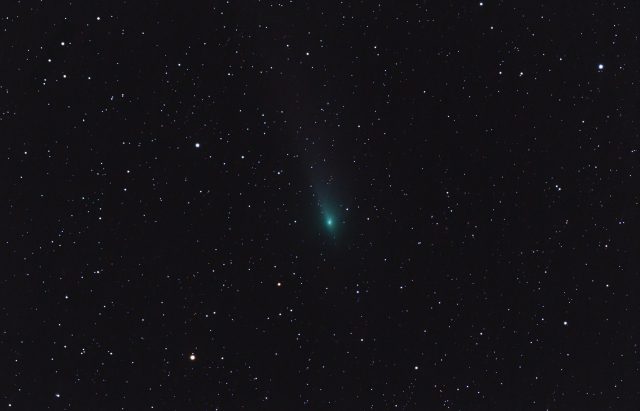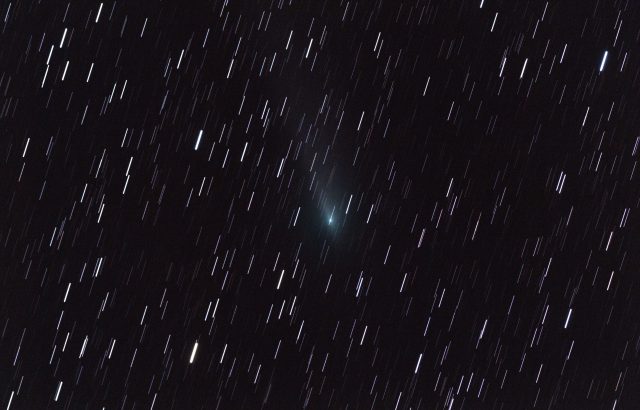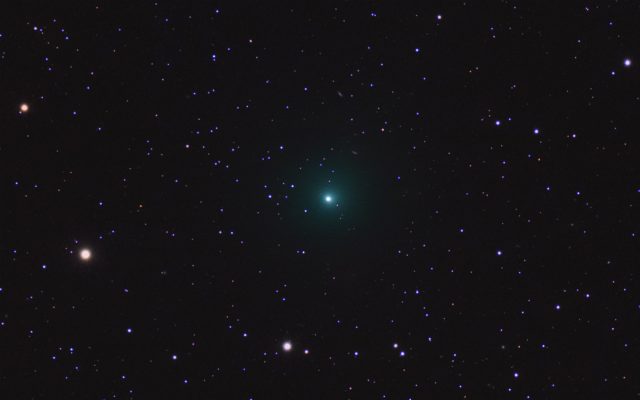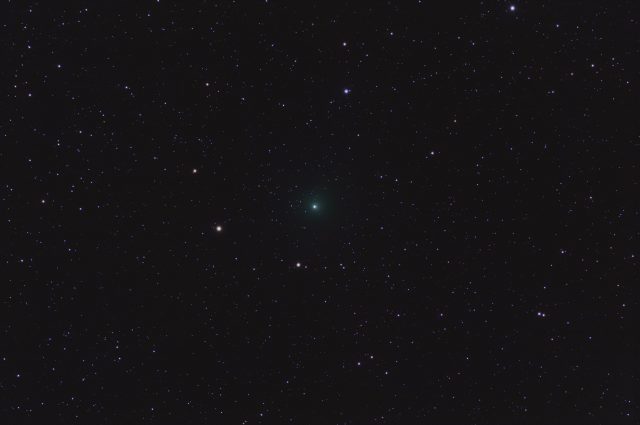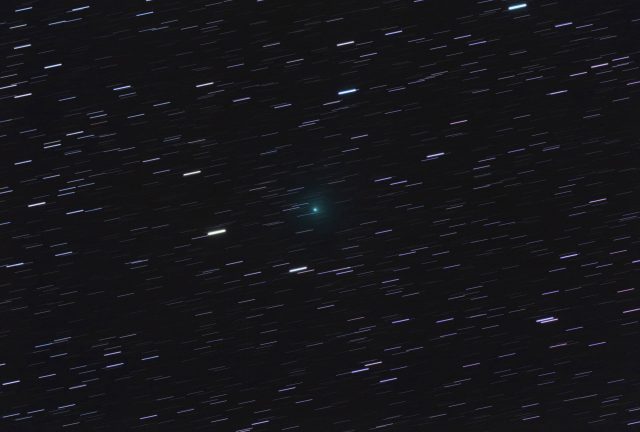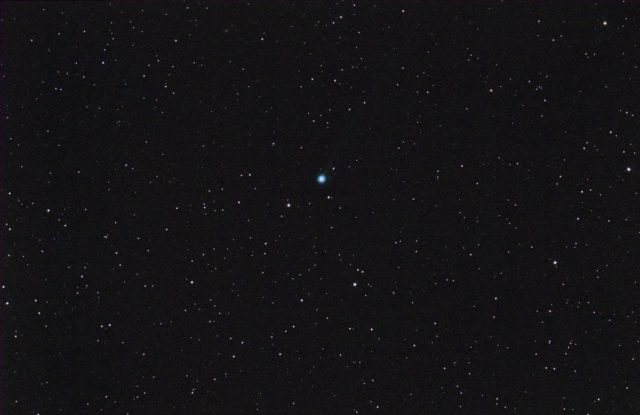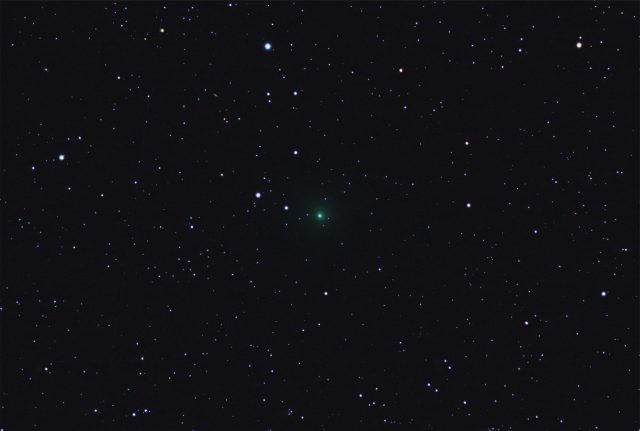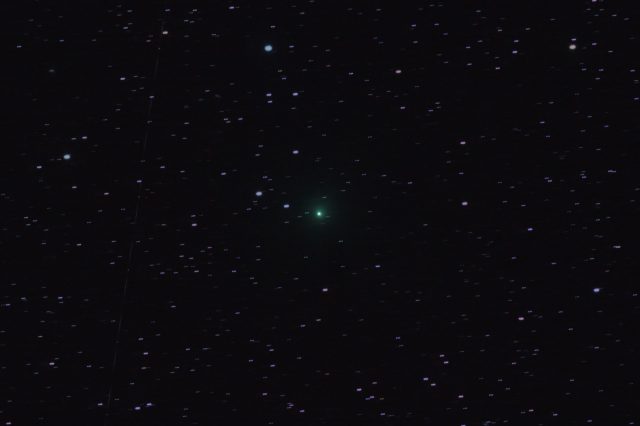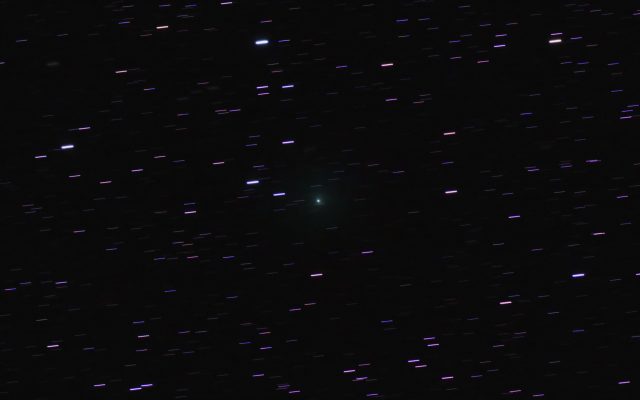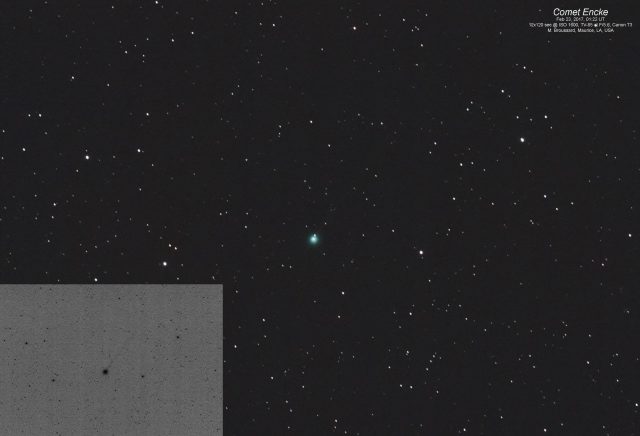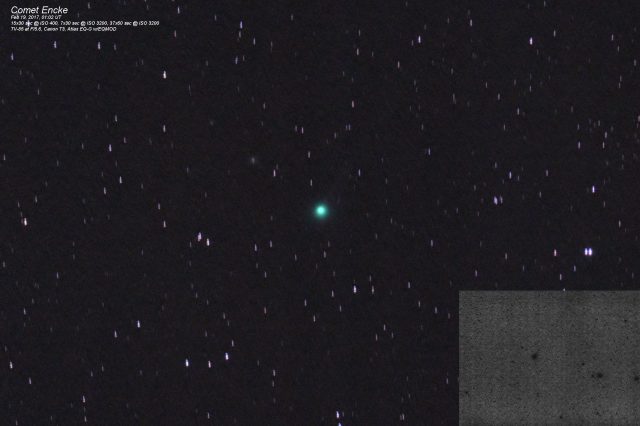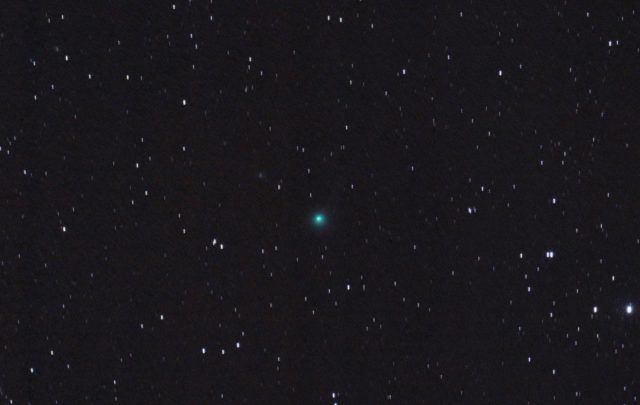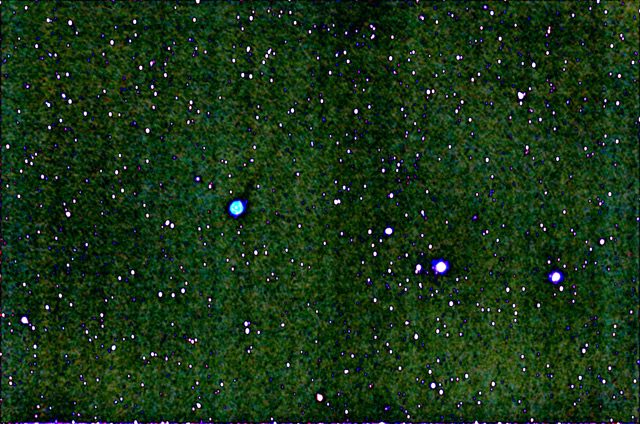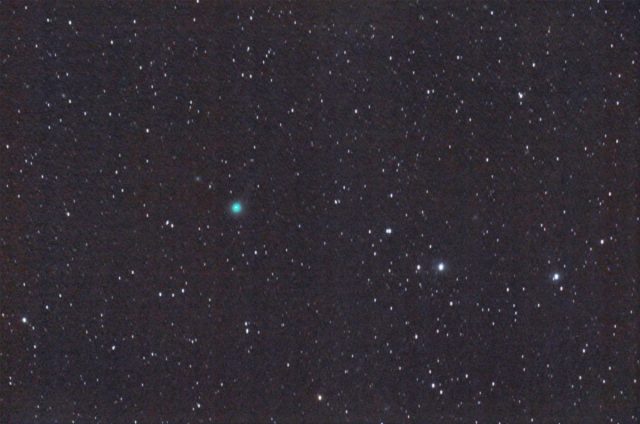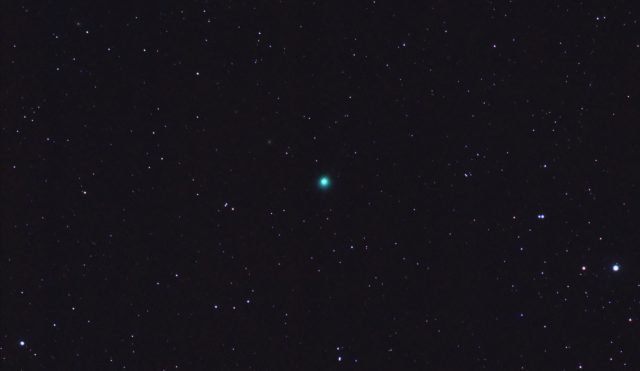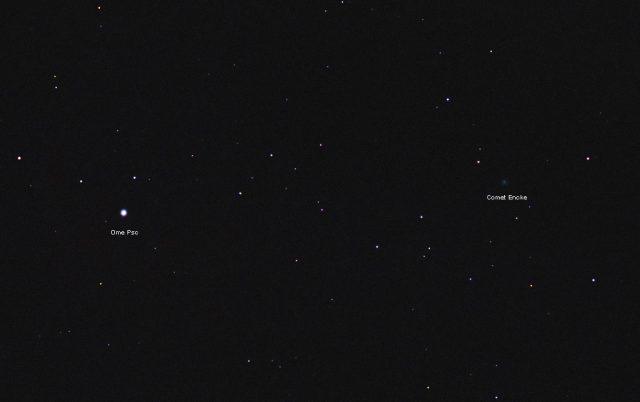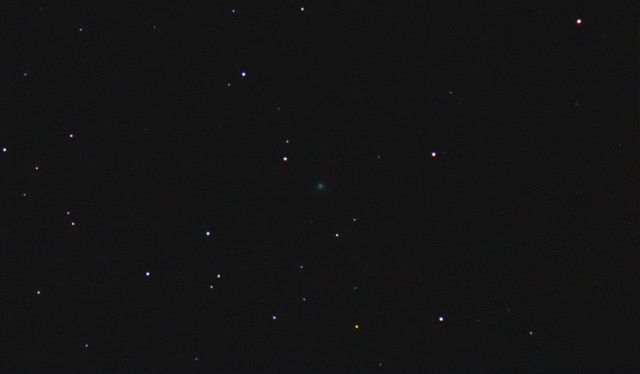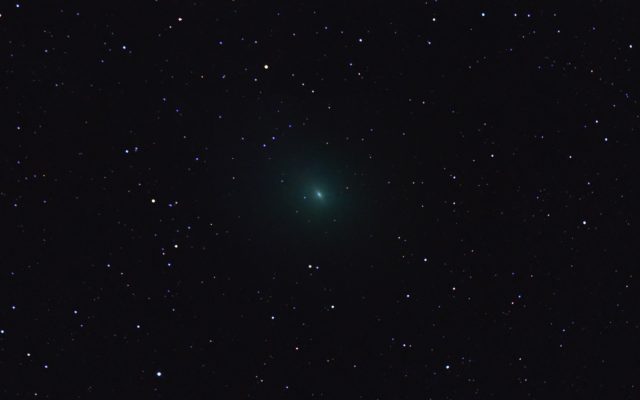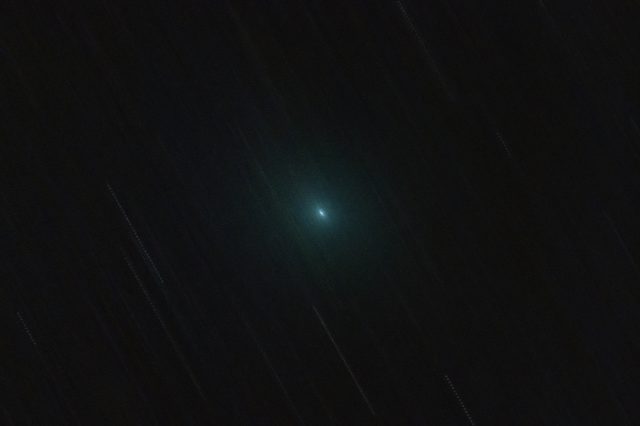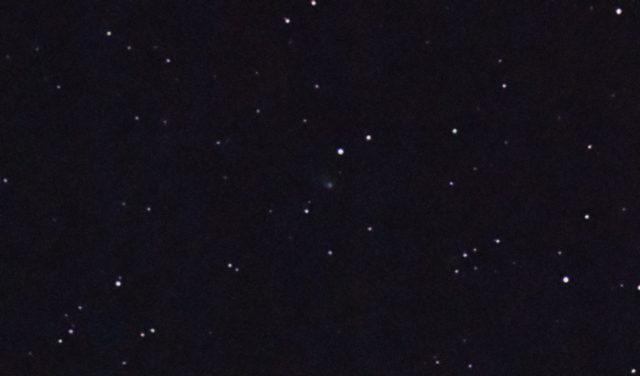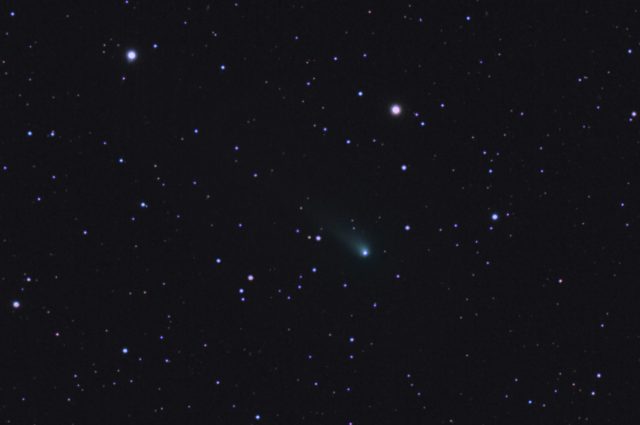
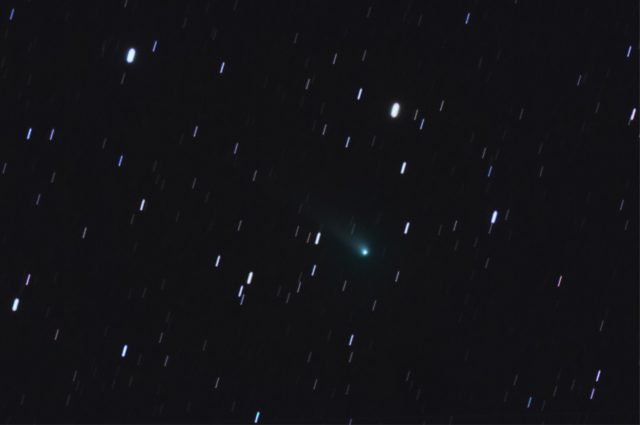
I was able to catch 4 comets on the night of Feb 25/26th, 2017. Comet Johnson was the last one of the night and I got some good data on it this time.
I have processed the data like usual and included both a star freeze and star streaks version. I cropped these close at 100% full size.
The full frame is below:
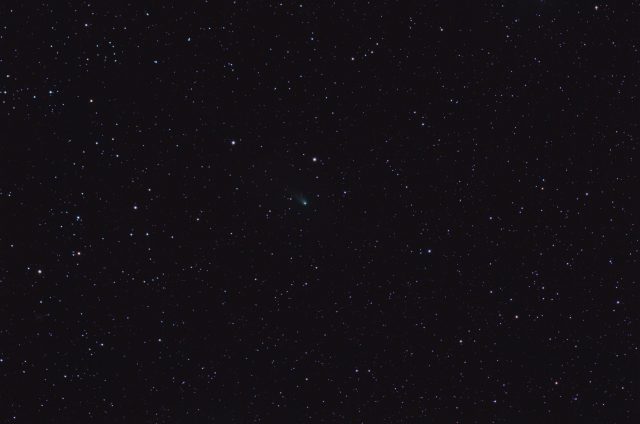
Update Feb 27, 2017:
I actually made a mistake on processing these and the exposure time involved. There are only two (2) sub-images that were shot for 3 minutes at ISO 3200 (the first two) and the remaining sixteen were all 5 minute subs at ISO 1600. Doh! 😮
Update Feb 28, 2017:
I had processed them with the 180 sec, ISO 3200 darks and offsets and it still came out. I wrongly stated to myself (and this blog) that I would not reprocess them with the right calibration data, since it looked good enough. However, I’m glad I changed my mind:
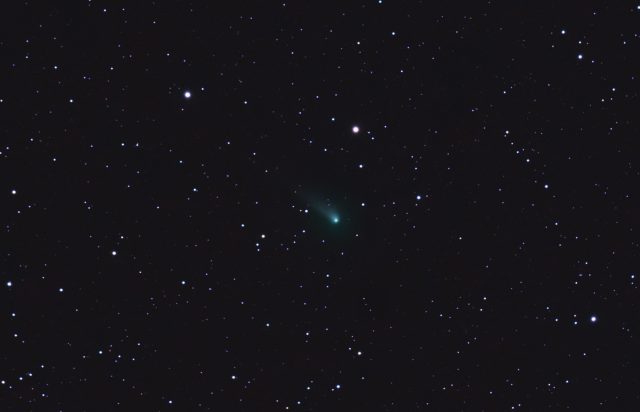
This was much cleaner in the reprocess. I have two layers here. One is the comet and one is the star background. I didn’t have to slice and dice 10 different processing attempts and put together an image. I only used the minimum needed. Nothing from the first processing job was used.

